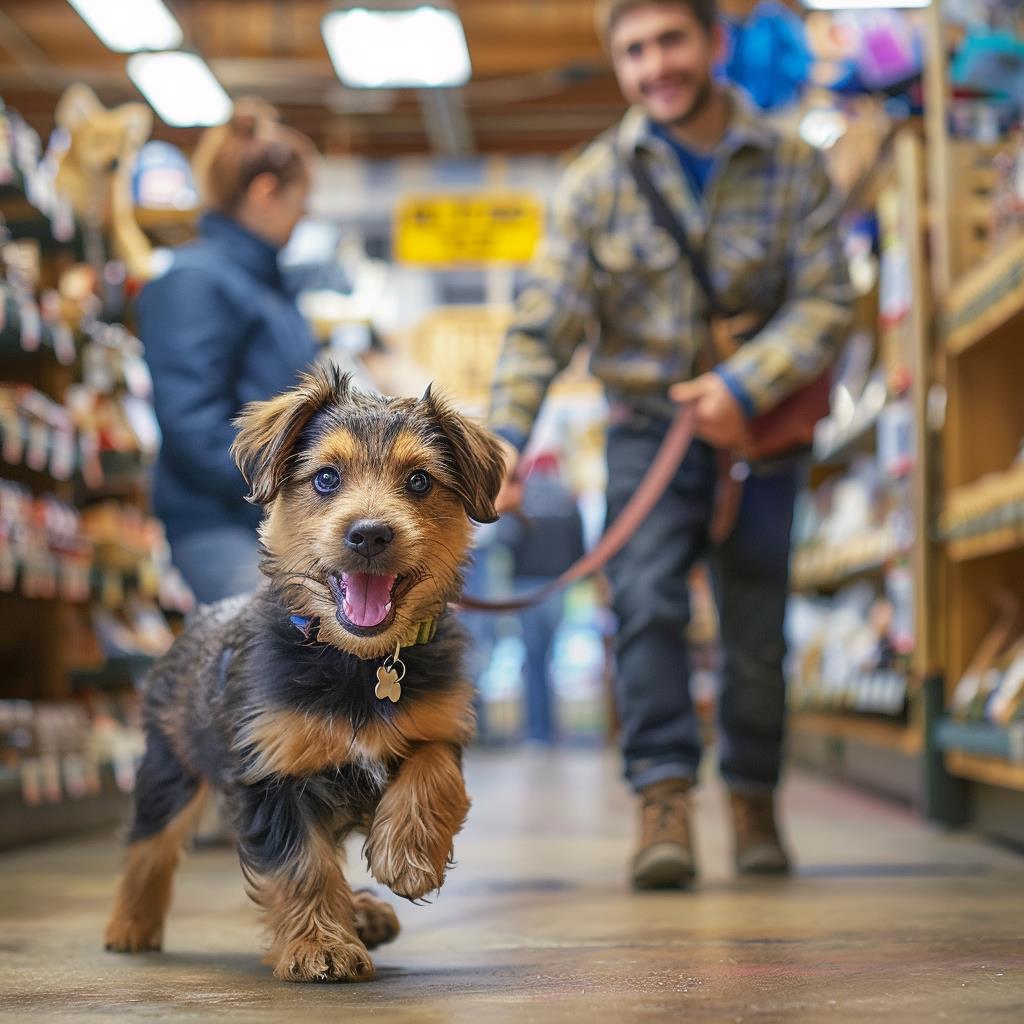Unlock Dog Training Success with Positive Reinforcement Techniques

Understanding how to effectively train a dog is crucial for any pet owner seeking a harmonious relationship with their furry companion. Positive reinforcement has emerged as a highly effective and humane method for teaching desired behaviors, making it the preferred approach among trainers and pet enthusiasts alike. This technique focuses on rewarding good behavior rather than punishing bad behavior, fostering a more positive and enjoyable learning environment.
As we explore the significance of positive reinforcement in dog training, it’s essential to recognize its benefits:
- Builds trust between dog and owner
- Enhances learning by associating rewards with good behavior
- Encourages flexibility in training approaches
In this article, we’ll delve into the top five positive reinforcement strategies that every dog owner should know. These techniques not only improve training outcomes but also strengthen the bond between you and your pet. Let’s unlock the secrets to successful dog training and explore these invaluable methods together!
DISCOVER: Click here to learn how to prepare your pup for incredible hiking adventures!
Top 5: Positive Reinforcement – The Key to Successful Dog Training
In the fascinating world of canine companionship, the bond between humans and dogs is irreplaceable. It’s a relationship built on trust, mutual respect, and love—elements crucial for a harmonious existence. One of the most effective approaches for nurturing this bond and enhancing your dog’s learning experience is through positive reinforcement training. This method is not just about encouraging desirable behaviors; it also plays a pivotal role in fostering a loving and lasting relationship between you and your furry companion. This article explores the top five elements of positive reinforcement that make it an indispensable tool for successful dog training.

5. Building Trust Through Consistency
Trust is the cornerstone of any strong relationship. In the realm of dog training, building trust through consistent use of positive reinforcement is essential. Dogs, being creatures of habit, feel most secure when they can predict the outcomes of their actions. By consistently rewarding desired behaviors, you show your dog that positive actions have rewarding consequences, solidifying their trust in you.
Consider these strategies to cultivate consistency:
- Prompt rewarding: Deliver rewards immediately after the desired behavior to help your dog understand which action is being praised.
- Clear communication: Clearly define and communicate the behaviors you wish to encourage, using consistent cues and commands.
- Structured routine: Establish a routine that your dog can rely on, helping them feel secure in their environment.
By fostering an environment of trust through consistency, you lay the groundwork for a rewarding training experience that both you and your dog will benefit from.
4. Encouraging a Positive Learning Environment
A positive learning environment is crucial for successful training. Dogs thrive in settings where exploration and engagement are encouraged. When training sessions are infused with enthusiasm and positivity—via treats, toys, or praise—they turn into enjoyable experiences rather than stressful chores. The relaxed atmosphere promotes learning and helps your dog associate training with pleasure.
To enhance this environment, you can:
- Incorporate play: Make training fun by turning it into a game or incorporating playful activities.
- Use high-value rewards: Select rewards that your dog is particularly fond of to maintain attention and motivation.
- Progress gradually: As your dog masters a task, slowly increase the difficulty to keep them challenged and engaged.
By maintaining this positive atmosphere, you ensure your dog not only learns more effectively but also looks forward to training sessions eagerly.
3. Promoting Long-Term Retention of Skills
Positive reinforcement is known for its ability to promote the long-term retention of skills. When dogs associate certain behaviors with positive outcomes, they are more likely to remember and replicate those actions, crucial in maintaining obedience even amid distractions. This ability to retain skills over time ensures that training has a lasting impact beyond the sessions themselves.
To ensure long-term retention, consider these techniques:
- Regular practice: Schedule periodic training sessions to keep skills sharp.
- Phase out rewards: Gradually reduce the frequency of rewards as your dog becomes more proficient, encouraging intrinsic motivation.
- Integrate training into daily life: Reinforce learned behaviors in daily routines, ensuring skills are applied in various contexts.
Ultimately, these methods lead to the development of reliable and robust skills that your dog will utilize throughout their life.
2. Strengthening the Human-Dog Bond
A robust and meaningful bond between you and your dog is essential for a harmonious relationship. Positive reinforcement bridges the gap by enhancing communication, understanding, and mutual respect. Dogs who undergo training filled with kindness and reward mechanisms are typically more emotionally connected to their owners, resulting in a deeper and more rewarding companionship.
To strengthen this bond, try the following:
- Mutual respect and enjoyment: Ensure training sessions are respectful and enjoyable for both you and your dog.
- Family involvement: Engage all family members in the training process to provide a unified approach.
- Quality time: Spend one-on-one quality time with your dog, fostering stronger emotional connections.
By using positive reinforcement, you are not just teaching commands—you are nurturing a lifelong relationship filled with trust, understanding, and love.
1. Creating a Well-Behaved and Happy Dog
The ultimate objective of any training method is a well-adjusted, happy dog. Proper training prevents behavioral issues and enhances your dog’s ability to thrive in various environments. A well-behaved dog is a joy to be around and contributes positively to the broader community.
To help your dog reach their full potential, focus on:
- Reward good manners: Praise and reward your dog for exhibiting good behavior in different settings, like parks or social gatherings.
- Build resilience: Reinforce positive behavior in challenging situations, which helps develop your dog’s resilience.
- Regular reinforcement: Continuously reinforce training principles to maintain a positive and peaceful atmosphere.
With positive reinforcement, you not only teach essential skills but cultivate a happy, well-adjusted dog, leading to a fulfilling relationship and community presence.
| Category | Description |
|---|---|
| Enhanced Learning | Dogs trained with positive reinforcement learn more effectively as they associate behaviors with rewards, leading to faster mastery of commands. |
| Improved Bonding | Utilizing positive reinforcement strategies fosters a stronger emotional connection between the dog and the owner, enhancing trust and companionship. |
| Behavioral Modification | With positive reinforcement, undesirable behaviors can be discouraged effectively by not rewarding them, while simultaneously promoting good behavior through incentives. |
| Emotional Well-being | Dogs trained with positive reinforcement experience lower stress levels, leading to a more confident and happy pet, which is essential for their overall well-being. |
The effectiveness of positive reinforcement in dog training has been supported by numerous studies and expert opinions. This method emphasizes the importance of rewarding desired behaviors, encouraging dogs to repeat them in the future. By providing treats, praise, or playtime, owners can cultivate a nurturing training environment that yields remarkable results.One notable aspect of positive reinforcement is the impact on a dog’s emotional state. Unlike traditional methods that may rely on aversive corrections, positive strategies create an atmosphere of trust and safety. Trainers and dog psychologists advocate that learning should be a joyful experience for pets, which enhances not just their skills but also their inclination to engage with their human companions.The implications extend beyond just the training sessions. When a dog perceives training as an enjoyable game rather than a chore, they are more likely to participate. This shift in perspective fosters a lifelong passion for learning and interaction, benefiting both the pet and owner in their journey together.Moreover, as behaviors are reinforced, owners often notice a decrease in negative behaviors. Rather than simply suppressing actions through punishment, the focus is on encouraging constructive habits. This positive cycle not only leads to more obedient dogs but also contributes to a more harmonious household, where owners feel content and pets thrive.As you delve deeper into the world of canine training, consider exploring various techniques of positive reinforcement, including clicker training and reward-based systems. Each method offers unique advantages, allowing for flexibility in tailoring the training process to suit individual dogs and their needs.
DISCOVER MORE: Click here to learn how to keep your cat safe
Frequently Asked Questions About Positive Reinforcement in Dog Training
What exactly is positive reinforcement in the context of dog training?
Positive reinforcement involves rewarding a dog immediately after a behavior to increase the likelihood of that behavior being repeated. This reward can take the form of treats, verbal praise, or playtime. It’s all about using something pleasant to encourage good behavior, making the training process more enjoyable and effective for both the dog and the trainer.
Why is positive reinforcement considered more effective than other training methods?
Studies have shown that dogs trained with positive reinforcement tend to have higher levels of obedience and are more enthusiastic learners. Unlike punishment-based methods that can create fear or anxiety, positive reinforcement fosters a trusting relationship between the dog and the trainer. This method not only encourages desired behaviors but also boosts the dog’s confidence and willingness to learn.
Can positive reinforcement be used for all types of dog behaviors?
Absolutely! Positive reinforcement can be applied to a wide range of behaviors, from basic commands like sit and stay to more complex tricks and even correcting unwanted behaviors. The key is to be consistent and ensure that the reward is something the dog truly values. Over time, even more challenging behaviors can be addressed as dogs begin to understand the clear connection between their actions and positive outcomes.
How do I start using positive reinforcement with my own dog?
Begin by selecting a high-value reward that your dog loves. This could be a special treat or their favorite toy. Use the reward immediately after your dog performs a desired behavior, ensuring consistency in your approach. Start with simple commands and gradually increase the difficulty as your dog becomes more proficient. Remember to keep sessions short and fun to maintain your dog’s interest and enthusiasm.
Are there any potential downsides to using positive reinforcement?
While generally very effective, positive reinforcement requires patience and consistency. It might take some time for the dog to associate the rewards with positive behavior, especially in cases of deeply ingrained habits. Additionally, being too lenient or inconsistent can lead to mixed signals. However, when applied consistently and correctly, positive reinforcement offers a rewarding and humane approach to training that benefits both the dog and the owner.
DISCOVER MORE: Click here for essential tips
Conclusion: Unleashing Success Through Positive Reinforcement
In the realm of dog training, the methodology of positive reinforcement has proven itself to be not only effective but transformative. This approach not only encourages good behavior but also fosters an environment of trust and mutual respect between animals and their owners. By focusing on rewarding desired actions, rather than punishing unwanted ones, positive reinforcement taps into dogs’ natural inclination to please their humans, making training sessions more productive and less stressful.
Main Takeaways
- Behavioral Improvement: Positive reinforcement leverages rewards to reinforce good behaviors, resulting in a more obedient and responsive pet.
- Strengthened Bond: The practice enhances the relationship between dogs and owners, cultivating a foundation of trust and understanding.
- Reduced Stress: Training becomes a pleasurable experience for dogs, as the absence of negative stimuli and punishment reduces anxiety and fear.
- Adaptability: This method can be tailored to suit individual dogs, accounting for their unique preferences and personality traits.
- Sustainability: Positive reinforcement encourages lifelong learning, ensuring skills remain sharp and behaviors consistent.
In the broader discussion of pet training, making decisions grounded in compassion and understanding proves to be in the best interest of both the pets and their owners. The efficacy of positive reinforcement lies in its simplicity and science-backed results. As dog owners continue to seek humane and efficient training methods, this approach stands out as a beacon of success. By adopting positive reinforcement, owners not only teach their pets valuable skills but also pave the way for a more harmonious coexistence, inspiring others to explore this rewarding journey.


